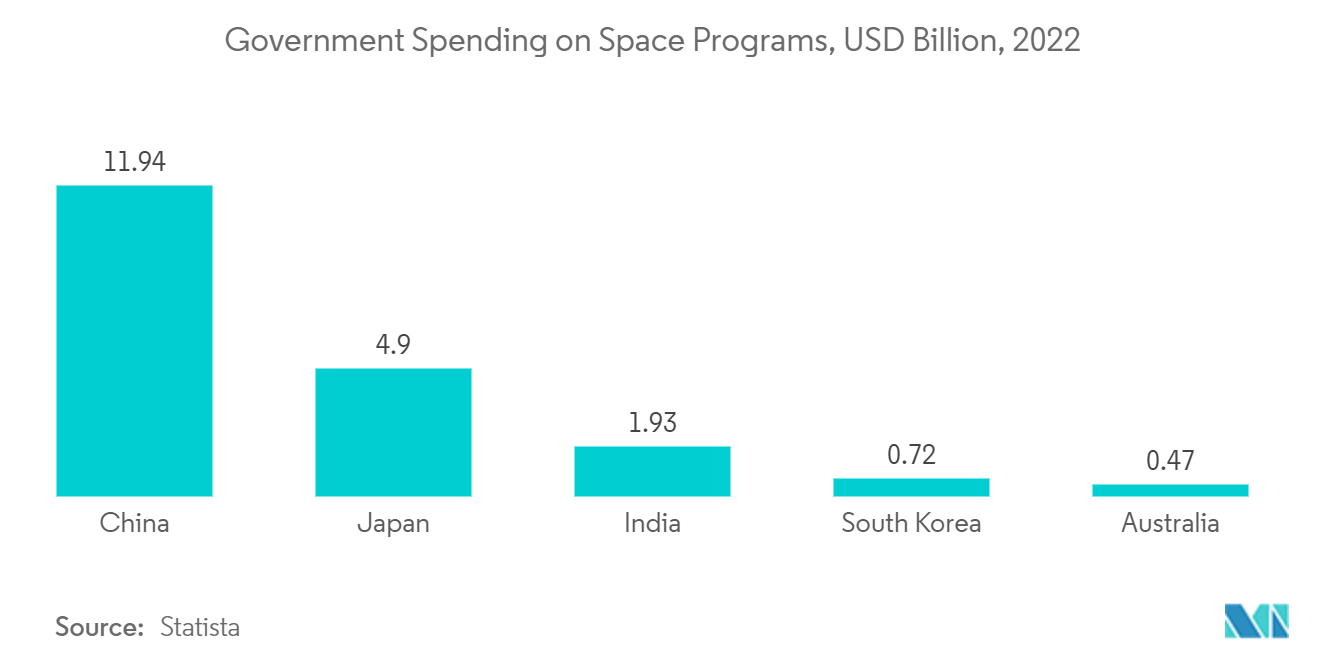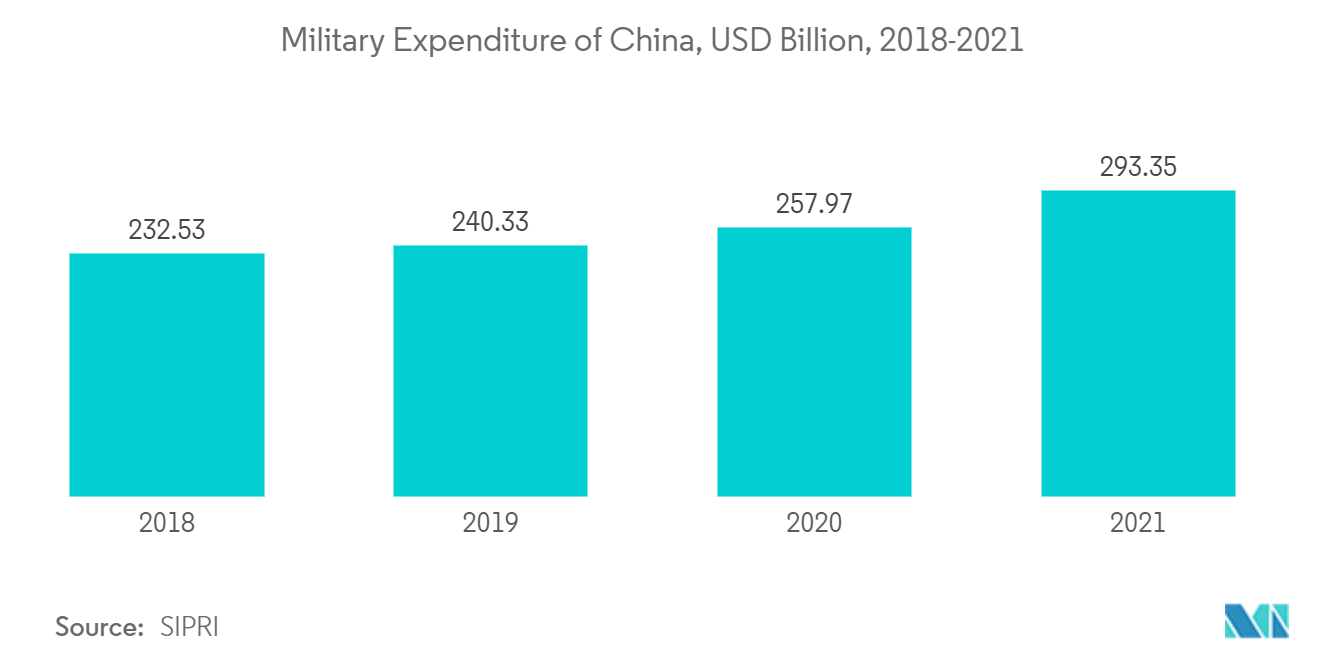Market Trends of Asia-Pacific C4ISR Industry
Increasing Investments to Enhance the Space-based C4ISR Capabilities in Asia-Pacific
With the emergence of several space-based systems that can replace the traditional C4ISR architecture, several countries are allocating substantial resources to such programs in their defense spending plans. Space-based C4ISR capabilities have become important for the global armed forces, as they offer a technological edge over adversaries. The advent of small satellites that offer the same performance as traditional satellites while contributing to cost savings is driving investments into space-based C4ISR systems. In addition, the advent of pseudo-high-altitude satellites (HAPS), which incorporates the best aspects of terrestrial and satellite-based communication systems, bridged the gap between drones and satellites in terms of coverage and cost. For instance, in February 2021, India's Hindustan Aeronautics Limited (HAL) announced the development of a futuristic high-altitude pseudo satellite with a local start-up company to enhance the C4ISR capabilities of the Indian armed forces. Such developments are expected to augment the prospects of the Space-based C4ISR segment during the forecast period.

China to Experience the Highest CAGR during the Forecast Period
China is expected to dominate the market throughout the forecast period, due to the developments of manned and unmanned aircraft, reconnaissance satellites, and sophisticated ground-based infrastructure that are deployed into China's emerging network-centric military. China is the highest military spender in the Asia-Pacific region and the country has allocated significant resources to improve space-related R&D and launch infrastructure. Additionally, the country is involved in the development of advanced UAVs, like the Wing Loong ID UAV, which is designed for missions, like intelligence, surveillance, reconnaissance (ISR), border patrol, counter-terrorism, and anti-smuggling. China developed its AEWC&C system, KJ-2000. The KJ-2000 has indigenously produced phased array radar capable of tracking sixty to one hundred aerial targets simultaneously at up to four hundred and seventy kilometers. China is also investing heavily in space-based C4ISR capabilities. In the past few years, there has been a significant advancement in China's C4ISR-related space development programs, like the Beidou-2 satellite series. China has also modernized and expanded its space launch infrastructure to facilitate space C4ISR programs. Such developments are expected to propel the market growth of the country during the forecast period.


